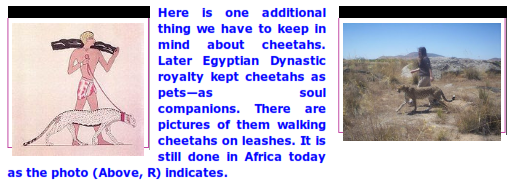Egyptians and Cats and Cheetahs

Preliterate Egypt was also a culture in which domestic cats also began to occupy a special spiritual place sometime after 8000 B.C. when it is believed Semitic tribes from the Levant introduced them into the Nile delta.
I believe that part of the reason cats eventually grew into being seen as Gods was their marked resemblance to the Cheetah, who would have already been considered divine because of Mafdet' s human/cheetah nature. Let's take a deeper look now at the "cheetah/cat connection" that is unique to the cheetah and that other large cats don’t enjoy.
Let's start with this: the cheetah’s face is almost identical to that of a cat, your cat. Take a look at these photos if you need convincing.
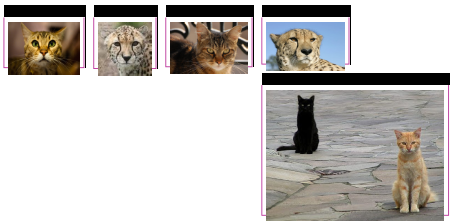

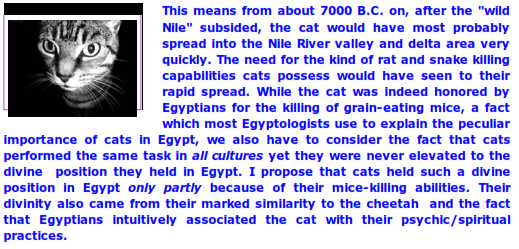
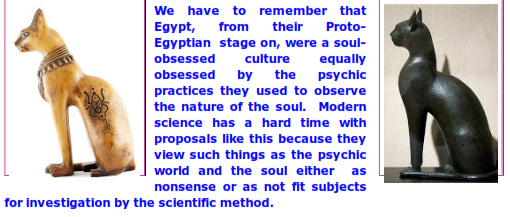

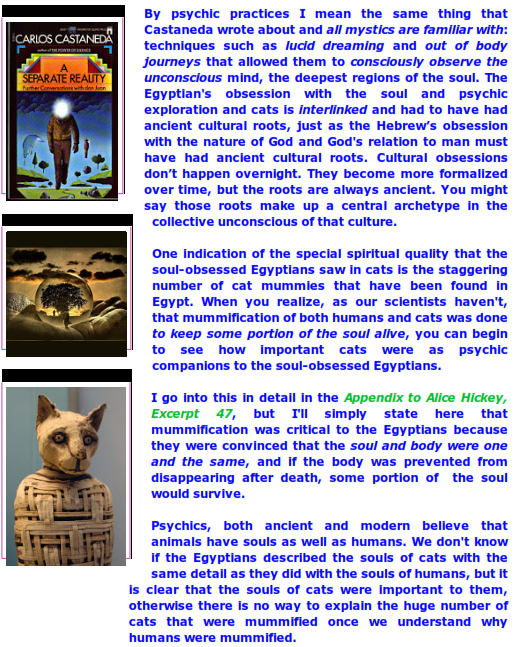


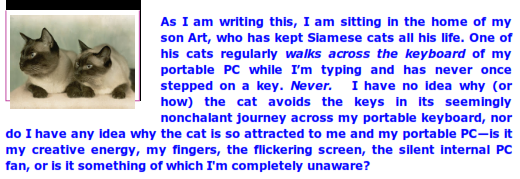


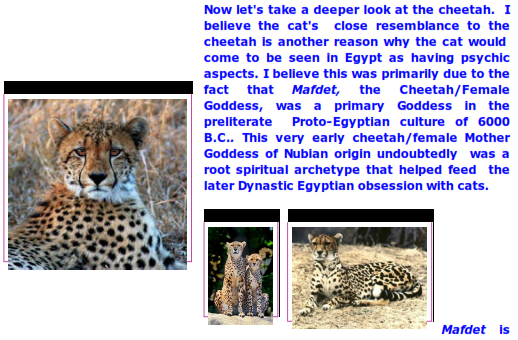
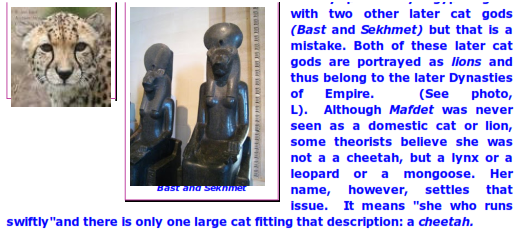
Mafdet never becomes a domesticated cat. She remains a half cheetah/ half human female firmly attached to the Proto-Egyptian Mother Goddess culture, and as a result is all but lost in the transition to the literate, male-God, Dynastic Egypt that took hold in 3200 B.C. where the lion becomes the symbol of the emerging literate, Dynastic empire.
As I've mentioned earlier, there is every reason to believe the savage, halfanimal Mafdet became the Patron/Protector of our female Nubian Shaman, who I am going to start calling "River Mother." So, right now, I want to focus on Mafdet' s Nubian roots and the impact that the Mafdet-inspired River Mother would have had upon the Proto-Egyptian Semitic inhabitants of the Nile delta in 6000 B.C..
Before I go into detail on this, I want give you some more background on Mafdet, as she plays such an important role in River Mother' s spiritual mission, which I see as reviving the Nubian Mother Goddess culture in the Nile delta as a balance to the Pre-Hebraic Mother Goddess culture with its nascent logos consciousness. I believe that out of that early logos consciousness there had to have also also come an early version of the maleGod domination that was to eventually rise in both Mother Goddess cultures and replace them. Although we have no statues of Mafdet, we know a great deal about her because of written descriptions left by the Egyptians. If it weren't for those descriptions we would be lost because she is the only one of the early essential Nubian Mother Goddesses (Mut, Nut, Ma' at, Mafdet) who wasn't brought forward (through marriage) into the literate, male-God dominated pantheon of Dynastic Egypt.
This indicates to me that she was the most vital of the early Nubian Mother Goddesses and therefore the most threatening to the literate male Gods. It also is a strong indication that Mafdet would have been, as I have suggested, the Patron Goddess of our Nubian female shaman. Mafdet appears in the Egyptian pantheon as early as the First Dynasty but obviously has roots deep into preliterate times.The details of her worship are not clear, although a representation of her does appear on a vase that was found at a royal tomb in Abydos, which dates from between 2950-2800 B.C. but I believe it's likely that she is most probably of even earlier Nubian origin. Mafdet was usually depicted as a woman with the head of a cheetah or a cheetah with the head of a woman. (Sounds like a good description of the Sphinx, doesn't it?). Mafdet' s name translates as (she who) runs swiftly.
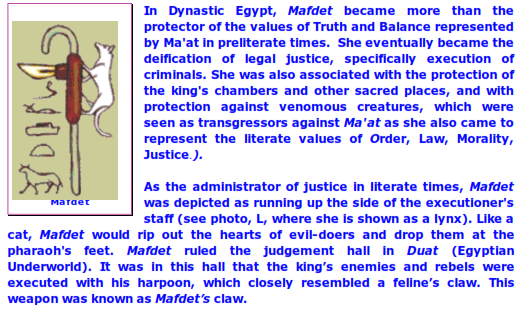


I believe one of the reasons the savage, half-animal Mafdet was not completely marginalized when the male Gods ascended in literate Dynastic Egypt was due to the fact she was so intimately linked to Ma' at and Ra (Maat was the eye of Ra.)
In a highly psychic culture such as Egypt, where relationships were not necessarily logical but psychic/spiritual, there is no doubt in my mind that both the cat and cheetah were potent inter-linked spiritual presences that derived, in turn, much of their potency from their association with Mafdet. That spirituality was so potent that it prevailed from the preliterate ProtoEgyptian culture of 6000 B.C. all the way into the last stages of literate Dynastic Egypt.
